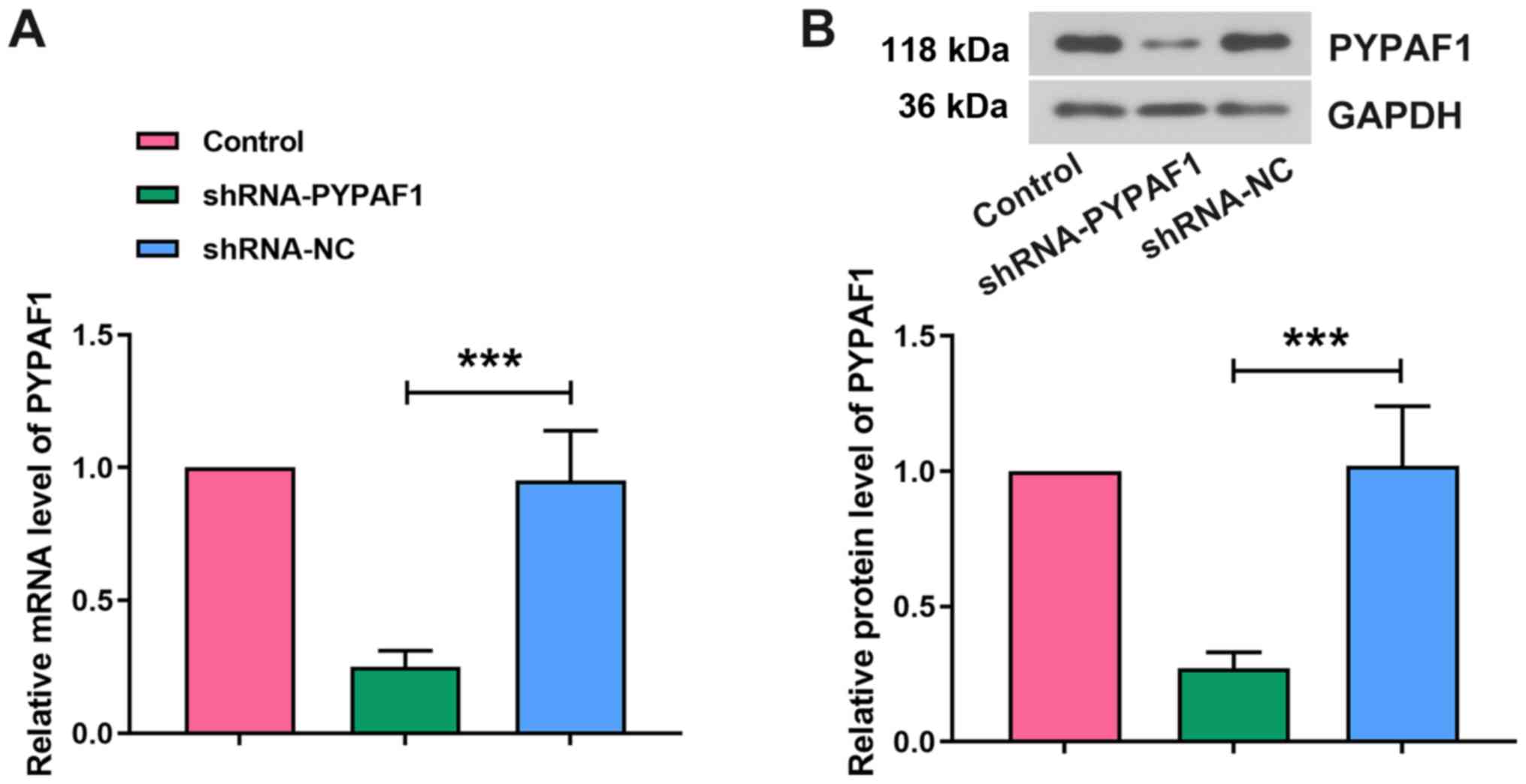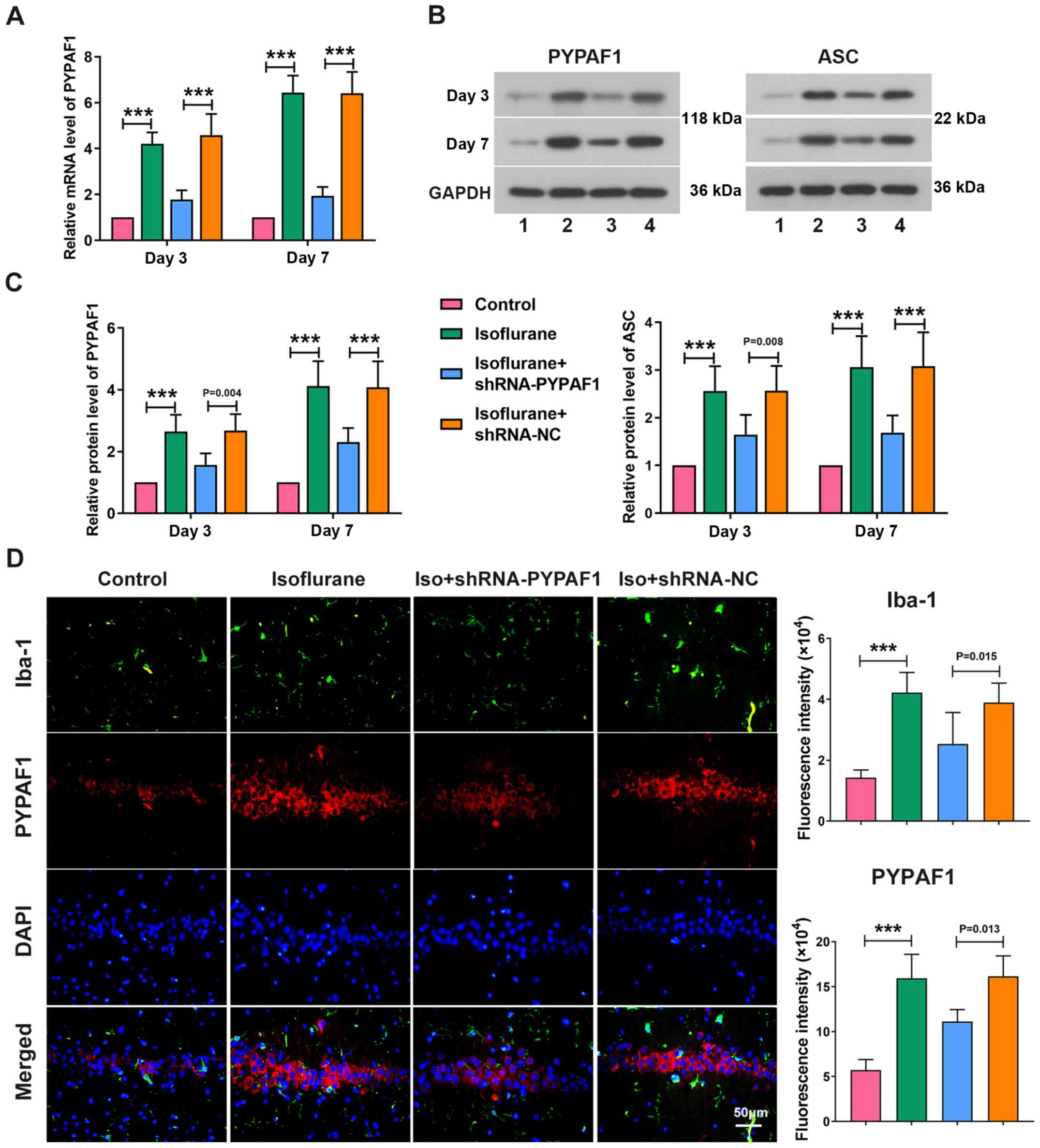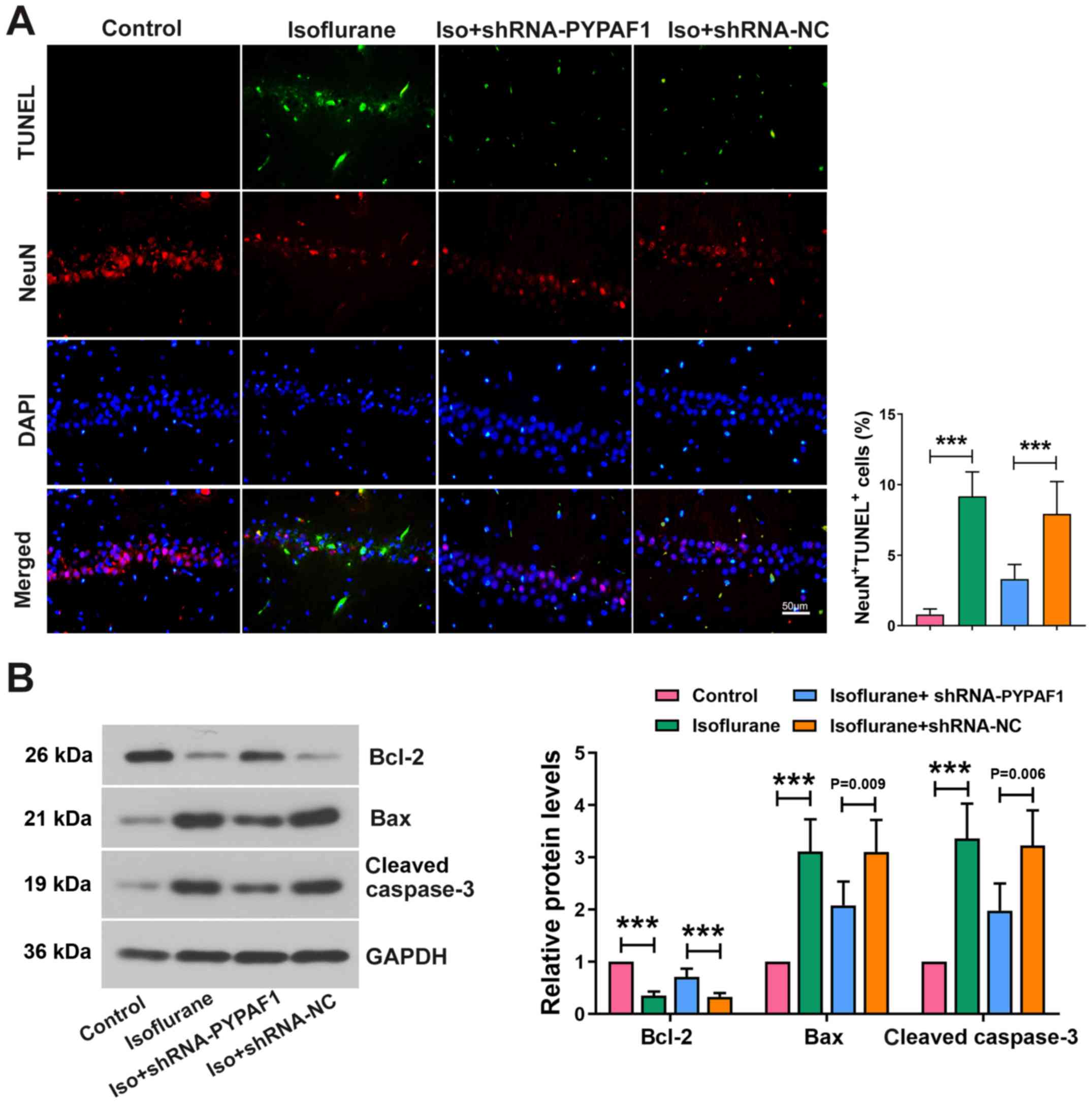|
1
|
Hartholt KA, van der Cammen TJ and Klimek
M: Postoperative cognitive dysfunction in geriatric patients. Z
Gerontol Geriatr. 45:411–416. 2012. View Article : Google Scholar : PubMed/NCBI
|
|
2
|
Rundshagen I: Postoperative cognitive
dysfunction. Dtsch Arztebl Int. 111:119–125. 2014.PubMed/NCBI
|
|
3
|
Rudolph JL, Marcantonio ER, Culley DJ,
Silverstein JH, Rasmussen LS, Crosby GJ and Inouye SK: Delirium is
associated with early postoperative cognitive dysfunction.
Anaesthesia. 63:941–947. 2008. View Article : Google Scholar : PubMed/NCBI
|
|
4
|
Nadelson MR, Sanders RD and Avidan MS:
Perioperative cognitive trajectory in adults. Br J Anaesth.
112:440–451. 2014. View Article : Google Scholar : PubMed/NCBI
|
|
5
|
Polunina AG, Golukhova EZ, Guekht AB,
Lefterova NP and Bokeria LA: Cognitive dysfunction after on-pump
operations: neuropsychological characteristics and optimal core
battery of tests. Stroke Res Treat. 2014:3028242014.PubMed/NCBI
|
|
6
|
Saczynski JS, Inouye SK, Kosar C, Tommet
D, Marcantonio ER, Fong T, Hshieh T, Vasunilashorn S, Metzger ED,
Schmitt E, et al: Cognitive and brain reserve and the risk of
postoperative delirium in older patients. Lancet Psychiatry.
1:437–443. 2014. View Article : Google Scholar
|
|
7
|
Krenk L, Rasmussen LS and Kehlet H: New
insights into the pathophysiology of postoperative cognitive
dysfunction. Acta Anaesthesiol Scand. 54:951–956. 2010. View Article : Google Scholar : PubMed/NCBI
|
|
8
|
Ministry of Civil Affairs of the People's
Republic of China, . The social service development statistical
bulletin 2018. Feb
13–2020
|
|
9
|
Kincannon CL, He W and West LA: Demography
of aging in China and the United States and the economic well-being
of their older populations. J Cross Cult Gerontol. 20:243–255.
2005. View Article : Google Scholar : PubMed/NCBI
|
|
10
|
Mandal PK, Schifilliti D, Mafrica F and
Fodale V: Inhaled anesthesia and cognitive performance. Drugs Today
(Barc). 45:47–54. 2009. View Article : Google Scholar : PubMed/NCBI
|
|
11
|
Amor S and Woodroofe MN: Innate and
adaptive immune responses in neurodegeneration and repair.
Immunology. 141:287–291. 2014. View Article : Google Scholar : PubMed/NCBI
|
|
12
|
Li N, Zhang X, Dong H, Hu Y and Qian Y:
Bidirectional relationship of mast cells-neurovascular unit
communication in neuroinflammation and its involvement in POCD.
Behav Brain Res. 322:60–69. 2017. View Article : Google Scholar : PubMed/NCBI
|
|
13
|
Wu X, Lu Y, Dong Y, Zhang G, Zhang Y, Xu
Z, Culley DJ, Crosby G, Marcantonio ER, Tanzi RE, et al: The
inhalation anesthetic isoflurane increases levels of
proinflammatory TNF-α, IL-6, and IL-1β. Neurobiol Aging.
33:1364–1378. 2012. View Article : Google Scholar : PubMed/NCBI
|
|
14
|
Sierra A, Gottfried-Blackmore AC, McEwen
BS and Bulloch K: Microglia derived from aging mice exhibit an
altered inflammatory profile. Glia. 55:412–424. 2007. View Article : Google Scholar : PubMed/NCBI
|
|
15
|
Hansen DV, Hanson JE and Sheng M:
Microglia in Alzheimer's disease. J Cell Biol. 217:459–472. 2018.
View Article : Google Scholar : PubMed/NCBI
|
|
16
|
Qiu LL, Ji MH, Zhang H and Yang JJ, Sun
XR, Tang H, Wang J, Liu WX and Yang JJ: NADPH oxidase 2-derived
reactive oxygen species in the hippocampus might contribute to
microglial activation in postoperative cognitive dysfunction in
aged mice. Brain Behav Immun. 51:109–118. 2016. View Article : Google Scholar : PubMed/NCBI
|
|
17
|
Wang HL, Ma RH, Fang H, Xue ZG and Liao
QW: Impaired spatial learning memory after isoflurane anesthesia or
appendectomy in aged mice is associated with microglia activation.
J Cell Death. 8:9–19. 2015. View Article : Google Scholar : PubMed/NCBI
|
|
18
|
Lamkanfi M and Dixit VM: Mechanisms and
functions of inflammasomes. Cell. 157:1013–1022. 2014. View Article : Google Scholar : PubMed/NCBI
|
|
19
|
Song L, Pei L, Yao S, Wu Y and Shang Y:
NLRP3 inflammasome in neurological diseases, from functions to
therapies. Front Cell Neurosci. 11:632017. View Article : Google Scholar : PubMed/NCBI
|
|
20
|
Manji GA, Wang L, Geddes BJ, Brown M,
Merriam S, Al-Garawi A, Mak S, Lora JM, Briskin M, Jurman M, et al:
PYPAF1, a PYRIN-containing Apaf1-like protein that assembles with
ASC and regulates activation of NF-kappa B. J Biol Chem.
277:11570–11575. 2002. View Article : Google Scholar : PubMed/NCBI
|
|
21
|
Próchnicki T, Mangan MS and Latz E: Recent
insights into the molecular mechanisms of the NLRP3 inflammasome
activation. F1000Res. 5:F10002016. View Article : Google Scholar
|
|
22
|
Zhang N, Zhang X, Liu X, Wang H, Xue J, Yu
J, Kang N and Wang X: Chrysophanol inhibits NALP3 inflammasome
activation and ameliorates cerebral ischemia/reperfusion in mice.
Mediators Inflamm. 2014:3705302014. View Article : Google Scholar : PubMed/NCBI
|
|
23
|
Zhang Z, Li X, Li F and An L: Berberine
alleviates postoperative cognitive dysfunction by suppressing
neuroinflammation in aged mice. Int Immunopharmacol. 38:426–433.
2016. View Article : Google Scholar : PubMed/NCBI
|
|
24
|
National Academy of Sciences, . The
National Academies Collection: Reports funded by National
Institutes of Health. National Academies Press. (Washington, DC).
1975.
|
|
25
|
Livak KJ and Schmittgen TD: Analysis of
relative gene expression data using real-time quantitative PCR and
the 2(-Delta Delta C(T)) method. Methods. 25:402–408. 2001.
View Article : Google Scholar : PubMed/NCBI
|
|
26
|
Powell LM and Molyneux M: Should patients
be advised not to drive for 4 days after isoflurane anaesthesia?
Anaesthesia. 72:682–685. 2017. View Article : Google Scholar : PubMed/NCBI
|
|
27
|
Mahajan VA, Ni Chonghaile M, Bokhari SA,
Harte BH, Flynn NM and Laffey JG: Recovery of older patients
undergoing ambulatory anaesthesia with isoflurane or sevoflurane.
Eur J Anaesthesiol. 24:505–510. 2007. View Article : Google Scholar : PubMed/NCBI
|
|
28
|
Geng YJ, Wu QH and Zhang RQ: Effect of
propofol, sevoflurane, and isoflurane on postoperative cognitive
dysfunction following laparoscopic cholecystectomy in elderly
patients: A randomized controlled trial. J Clin Anesth. 38:165–171.
2017. View Article : Google Scholar : PubMed/NCBI
|
|
29
|
Kaufmann FN, Costa AP, Ghisleni G, Diaz
AP, Rodrigues AL, Peluffo H and Kaster MP: NLRP3
inflammasome-driven pathways in depression: Clinical and
preclinical findings. Brain Behav Immun. 64:367–383. 2017.
View Article : Google Scholar : PubMed/NCBI
|
|
30
|
White CS, Lawrence CB, Brough D and
Rivers-Auty J: Inflammasomes as therapeutic targets for Alzheimer's
disease. Brain Pathol. 27:223–234. 2017. View Article : Google Scholar : PubMed/NCBI
|
|
31
|
Proell M, Gerlic M, Mace PD, Reed JC and
Riedl SJ: The CARD plays a critical role in ASC foci formation and
inflammasome signalling. Biochem J. 449:613–621. 2013. View Article : Google Scholar : PubMed/NCBI
|
|
32
|
Martinon F, Burns K and Tschopp J: The
inflammasome: A molecular platform triggering activation of
inflammatory caspases and processing of proIL-beta. Mol Cell.
10:417–426. 2002. View Article : Google Scholar : PubMed/NCBI
|
|
33
|
Yatsiv I, Morganti-Kossmann MC, Perez D,
Dinarello CA, Novick D, Rubinstein M, Otto VI, Rancan M, Kossmann
T, Redaelli CA, et al: Elevated intracranial IL-18 in humans and
mice after traumatic brain injury and evidence of neuroprotective
effects of IL-18-binding protein after experimental closed head
injury. J Cereb Blood Flow Metab. 22:971–978. 2002. View Article : Google Scholar : PubMed/NCBI
|
|
34
|
Cibelli M, Fidalgo AR, Terrando N, Ma D,
Monaco C, Feldmann M, Takata M, Lever IJ, Nanchahal J, Fanselow MS,
et al: Role of interleukin-1beta in postoperative cognitive
dysfunction. Ann Neurol. 68:360–368. 2010. View Article : Google Scholar : PubMed/NCBI
|
|
35
|
Nayak D, Roth TL and McGavern DB:
Microglia development and function. Annu Rev Immunol. 32:367–402.
2014. View Article : Google Scholar : PubMed/NCBI
|
|
36
|
Lalancette-Hébert M, Gowing G, Simard A,
Weng YC and Kriz J: Selective ablation of proliferating microglial
cells exacerbates ischemic injury in the brain. J Neurosci.
27:2596–2605. 2007. View Article : Google Scholar : PubMed/NCBI
|
|
37
|
Moss DW and Bates TE: Activation of murine
microglial cell lines by lipopolysaccharide and interferon-gamma
causes NO-mediated decreases in mitochondrial and cellular
function. Eur J Neurosci. 13:529–538. 2001. View Article : Google Scholar : PubMed/NCBI
|
|
38
|
Ghosh S, Castillo E, Frias ES and Swanson
RA: Bioenergetic regulation of microglia. Glia. 66:1200–1212. 2018.
View Article : Google Scholar : PubMed/NCBI
|
|
39
|
Fernandes A, Miller-Fleming L and Pais TF:
Microglia and inflammation: Conspiracy, controversy or control?
Cell Mol Life Sci. 71:3969–3985. 2014. View Article : Google Scholar : PubMed/NCBI
|
|
40
|
Fougère B, Boulanger E, Nourhashémi F,
Guyonnet S and Cesari M: Chronic Inflammation: Accelerator of
Biological Aging. J Gerontol A Biol Sci Med Sci. 72:1218–1225.
2017. View Article : Google Scholar : PubMed/NCBI
|
|
41
|
Kennedy MB: Synaptic signaling in learning
and memory. Cold Spring Harb Perspect Biol. 8:a0168242013.
View Article : Google Scholar : PubMed/NCBI
|
|
42
|
Wang Z, Meng S, Cao L, Chen Y, Zuo Z and
Peng S: Critical role of NLRP3-caspase-1 pathway in age-dependent
isoflurane-induced microglial inflammatory response and cognitive
impairment. J Neuroinflammation. 15:1092018. View Article : Google Scholar : PubMed/NCBI
|



















